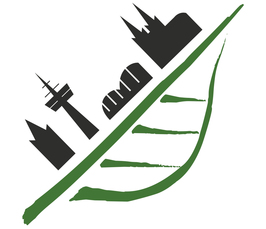Data Visualisation in R Online Course (for PhD students)
PhD Course
- Start: Jun 15, 2020 09:00 AM (Local Time Germany)
- End: Jun 16, 2020 05:00 PM
- Trainer: Rick Scavetta

Summary
Name: Data Visualization with R
Theme: Understanding & Communicating
Track: Practical Programming
Length: 2 days (March 19 & 20, 2020)
Trainer: Rick Scavetta
Skill level: Beginner
Language: English
Description
This two-day workshop enables life scientists to effectively create figures based on quantitative data that add impact to their publications. The workshop is divided into two one-day modules: Principles and Applications.
On the first day, the principles module focuses on understanding the purpose of a figure, choosing the most appropriate plot type, and the science of perception. The first day is primarily concerned with the art of visual communicaiton and integrates participants’ own examples into the teaching process.
On the second day, the applications module focuses on the practical implementation of the data visualisation principles discussed on the first day. This is done using the R statistical programming environment with the participants’ own data.
PRINCIPLES
Participants Learn How To:
- Use Figures and Tables to effectively tell the story of their research.
- Decide whether text, tables, or plots are most appropriate to convey the message of each result.
- Choose the most appropriate plot type for their data.
- Understand the science of perception and apply design principles to communicate their message clearly. Use aesthetics to relate sensory attributes (colour, shape, etc.) to abstractions (enrichment, change-over-time).
- Distinguish between graphics for publication and for data exploration.
Our Teaching Approach Emphasises:
- The participants’ own data – Participants submit their own figures or tables to be critiqued by the instructors.
- Relevant examples – Representations of biological data help participants to identify the challenges they will face in their own work.
- Effective use of figures – Figures are taught as a way to maximize the impact of a research article, reinforcing the written word.
APPLICATIONS
Participants Learn How To:
- Produce publication-quality figures directly in R.
- Automate graphics generation using templates and GUIs.
- Use R graphics packages appropriately, including base, lattice, ggplot2, and iPlots.
- Produce interactive visualizations for data exploration.
- Generate non-standard plots, e.g. mosaic plots, venn diagrams and heat maps.
Our Teaching Approach Emphasises:
- Practical code – Participants receive “cookbook” style code that they can immediately use or modify.
- The Power of R – Participants learn how to take advantage of R’s functional and flexible capabilities, e.g. in generating non-standard plots.
- Learning-by-doing – Key concepts are reinforced using hands-on practical exercises.